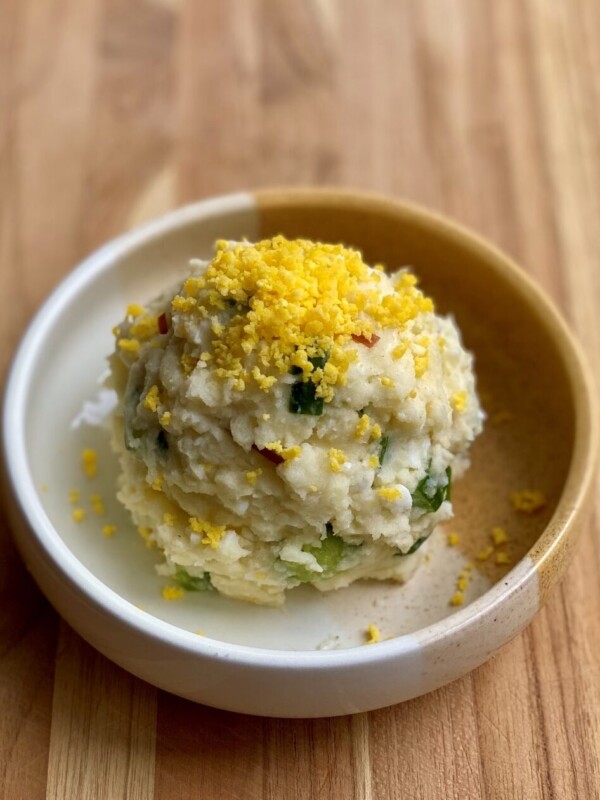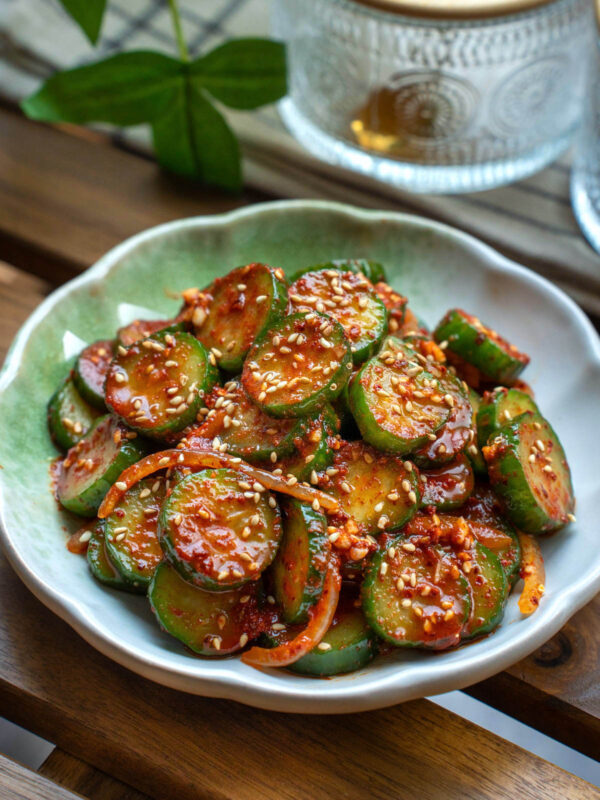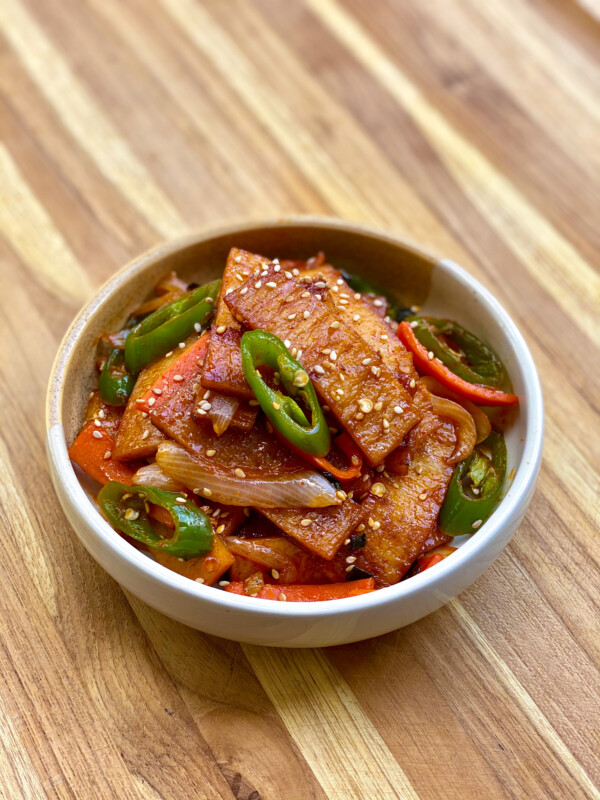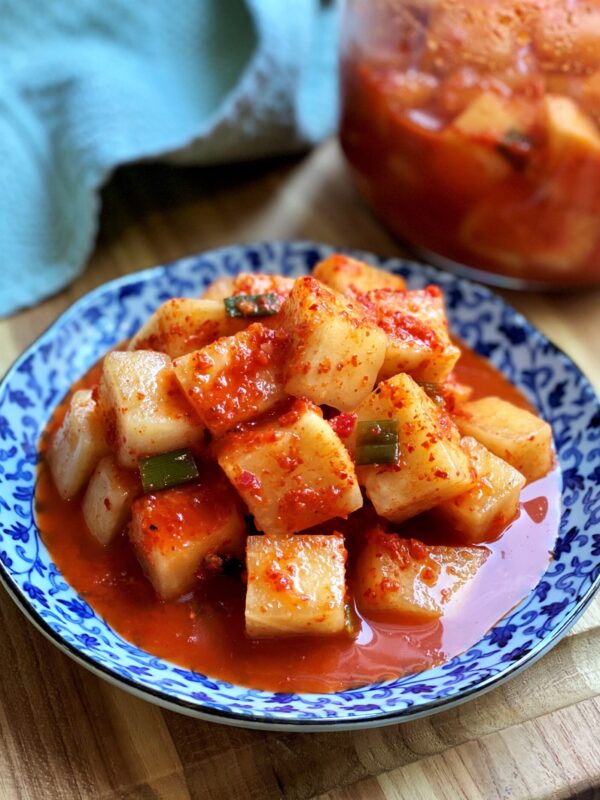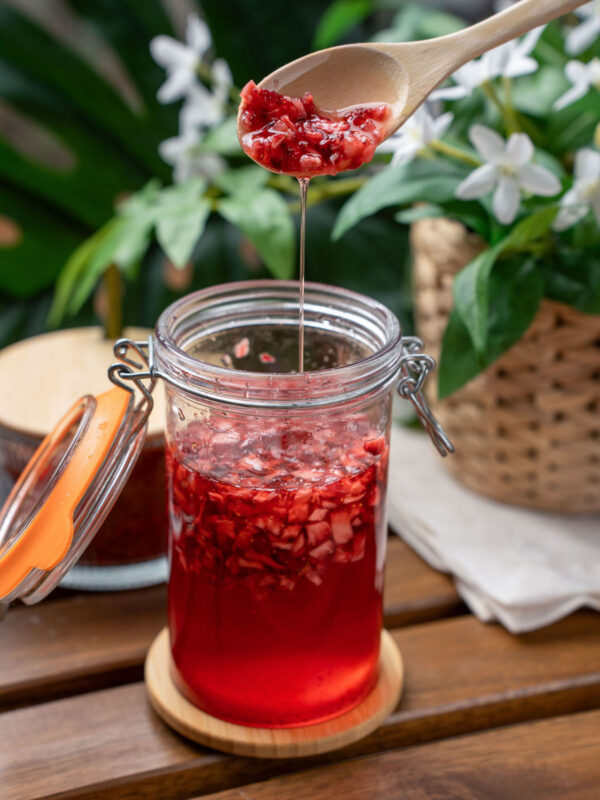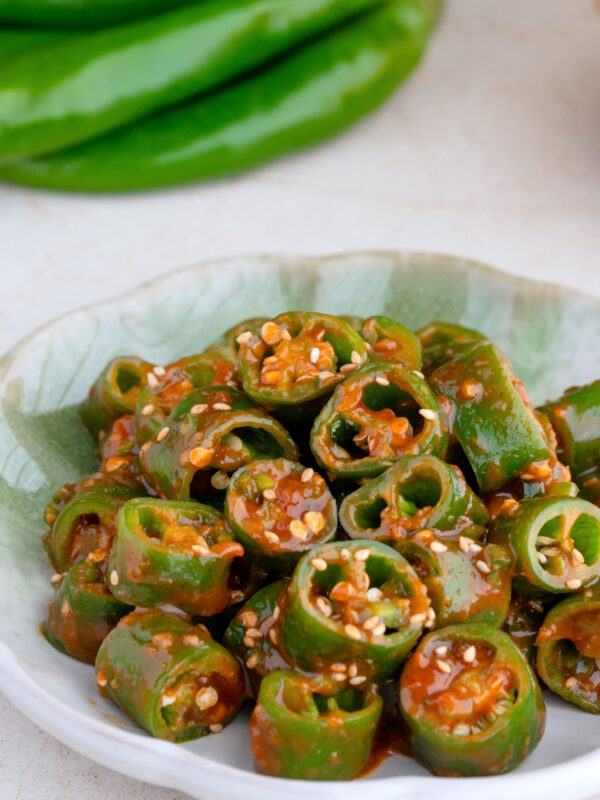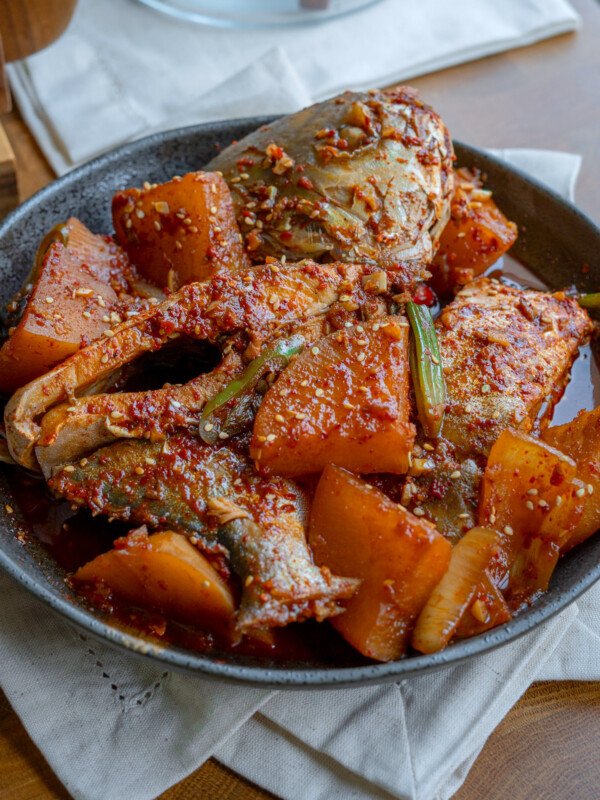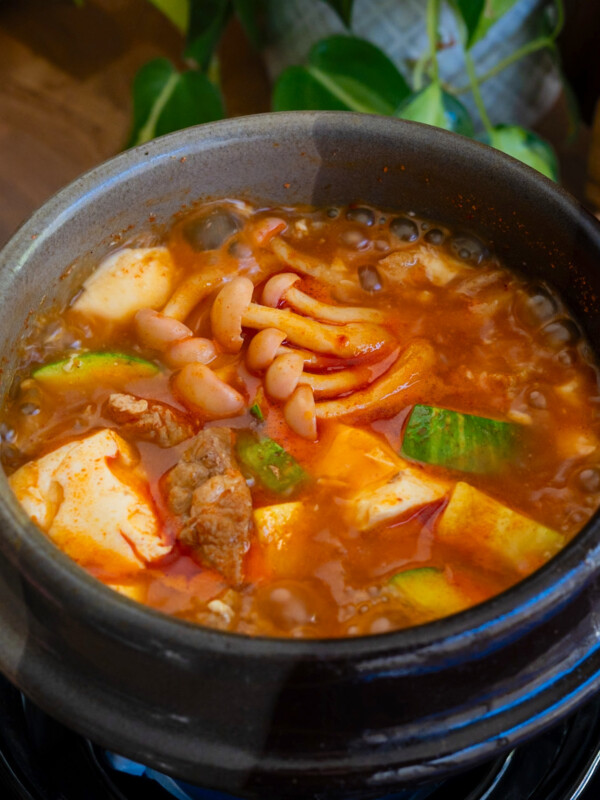This post may contain affiliate links. I only recommend products or services that I personally use or trust, promise!
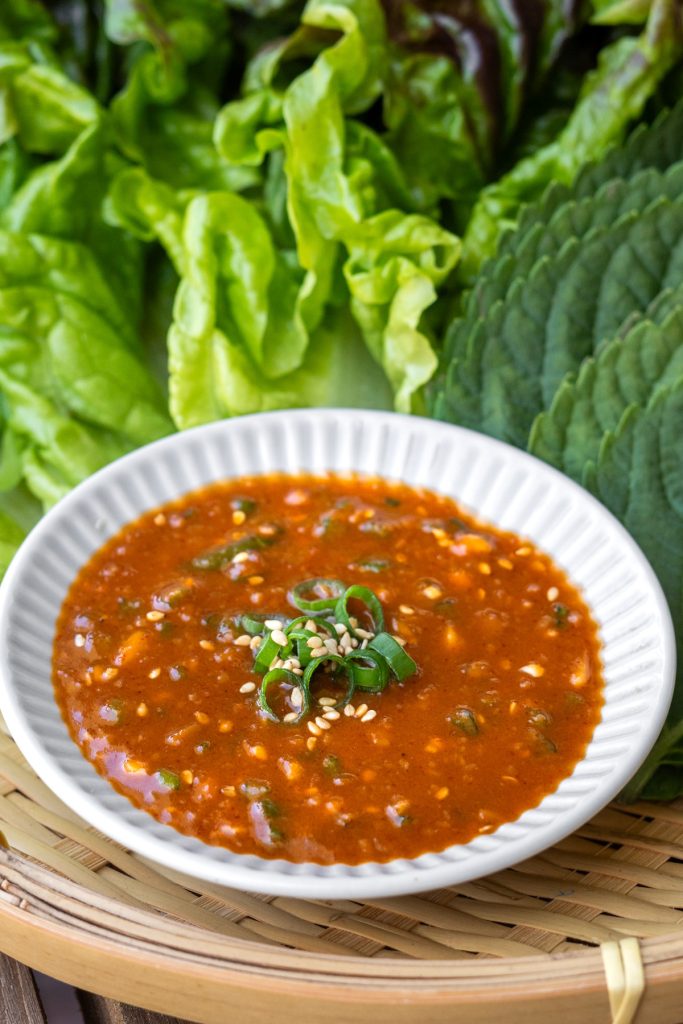
If ssamjang isn’t part of your KBBQ spread, you’re doing it wrong! Haha just kidding, there’s no wrong way to Korean BBQ. But ssamjang is one of the best ways to elevate any KBBQ experience- it’s the king of all Korean dipping sauces!
What is ssamjang?
Ssamjang is a traditional Korean condiment that is commonly used as a dipping sauce for grilled meats and vegetables. The main ingredients are dwenjang (fermented soybean paste) and gochujang (fermented chili paste).
It has a rich, savory, and slightly spicy flavor profile with a depth of umami from the fermented soybeans. It is often used as a sauce for Korean BBQ, lettuce wraps known as ssam, or served with dinner as a dipping sauce for fresh veggies.
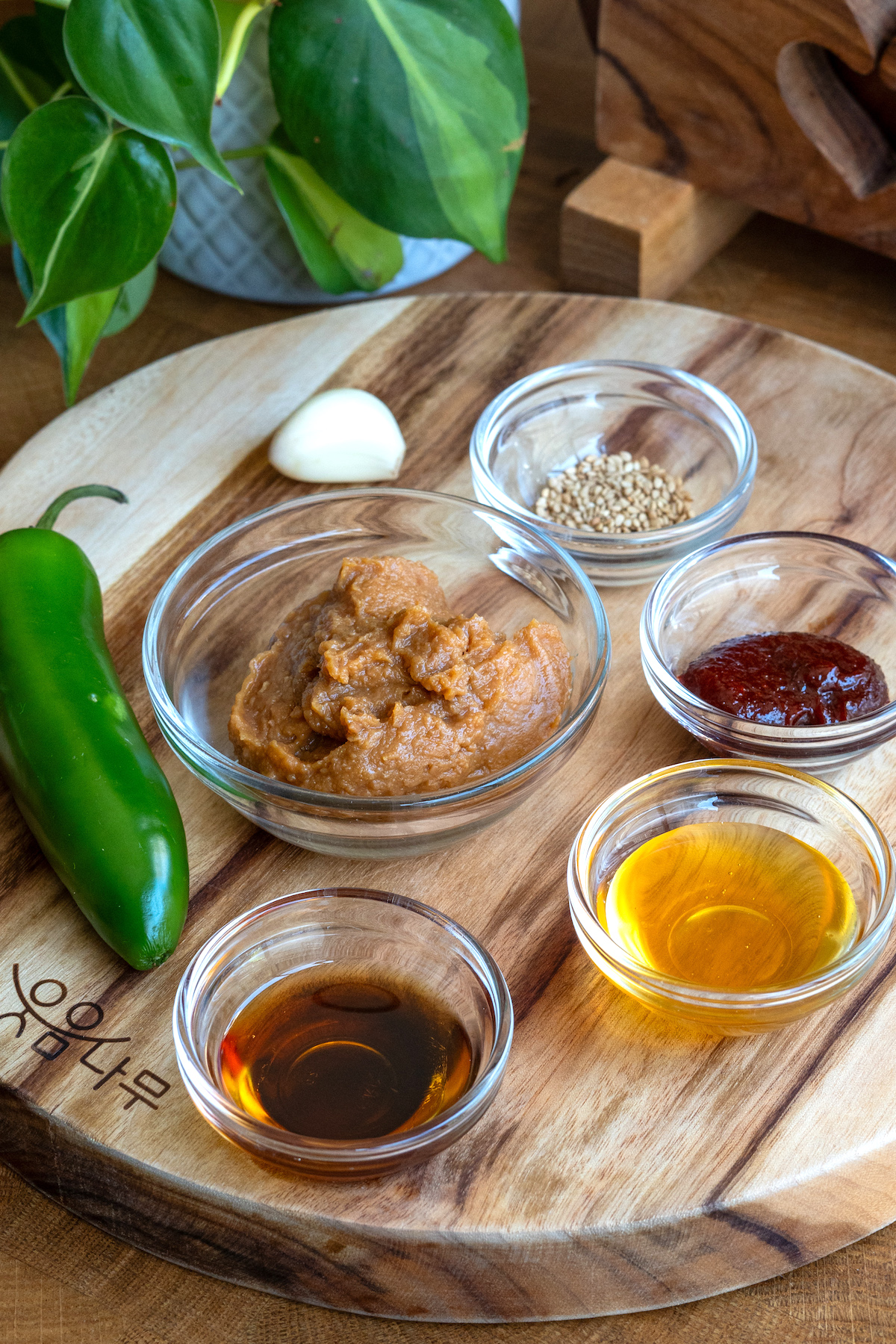
Ingredients
Dwenjang- aka fermented soybean paste, this is the main ingredient of this dipping sauce. I couldn’t find a link for the brand I prefer (pictured below), but here’s another brand I’ve tried and liked.
Gochujang– aka Korean red pepper paste. You can get the exact same brand I use here.
Sesame oil- I always use the Kadoya brand
- Honey- you can use any sweetener you prefer here, but I recommend using a liquid sweetener. Honey tastes the best to me.
Sesame seeds- for garnish and flavor
- Garlic & jalapeno– minced garlic is a must in ssamjang, but jalapeno is not very traditional. Jalapenos are not eaten in Korea, but I think ssamgjang + jalapeno is SUCH a tasty combo so I highly recommend adding them!
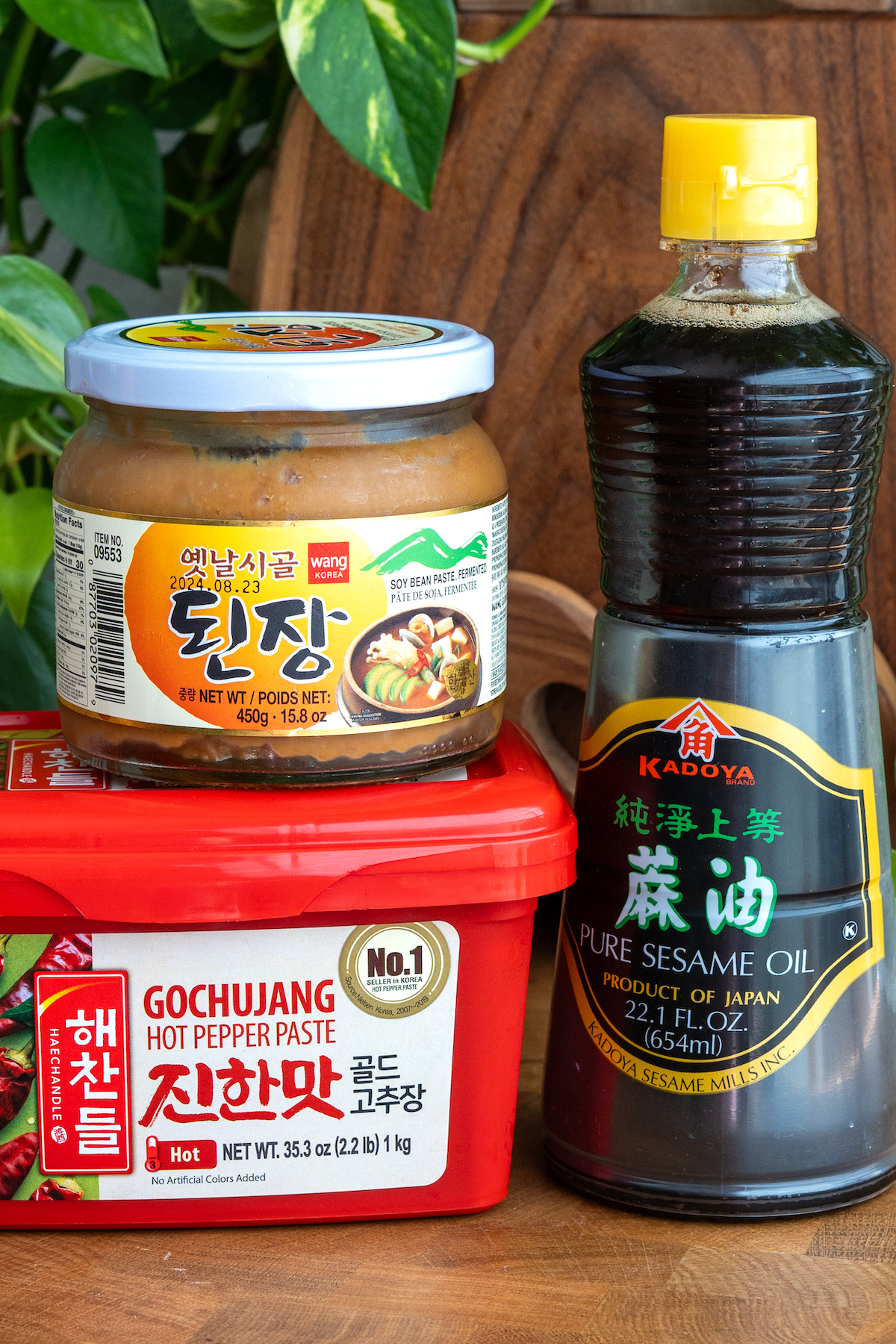
Optional Ingredients
If you want, you can add some of these commonly used ingredients for ssamjang. I do not include them in my original recipe because I personally don’t think they are necessary, and it just creates more work chopping ingredients.
Onion- white or yellow onion finely chopped
Green onion- thinly sliced
Chilsung cider- this is pretty common in Korea. Chilsung cider is a lemon-lime soda, very similar to Sprite or 7UP. I believe this is used as the sweetener for ssamjang, but it also functions as a thinner for thick pastes. I hardly ever have sugary sodas in my house, so it’s not something I use.
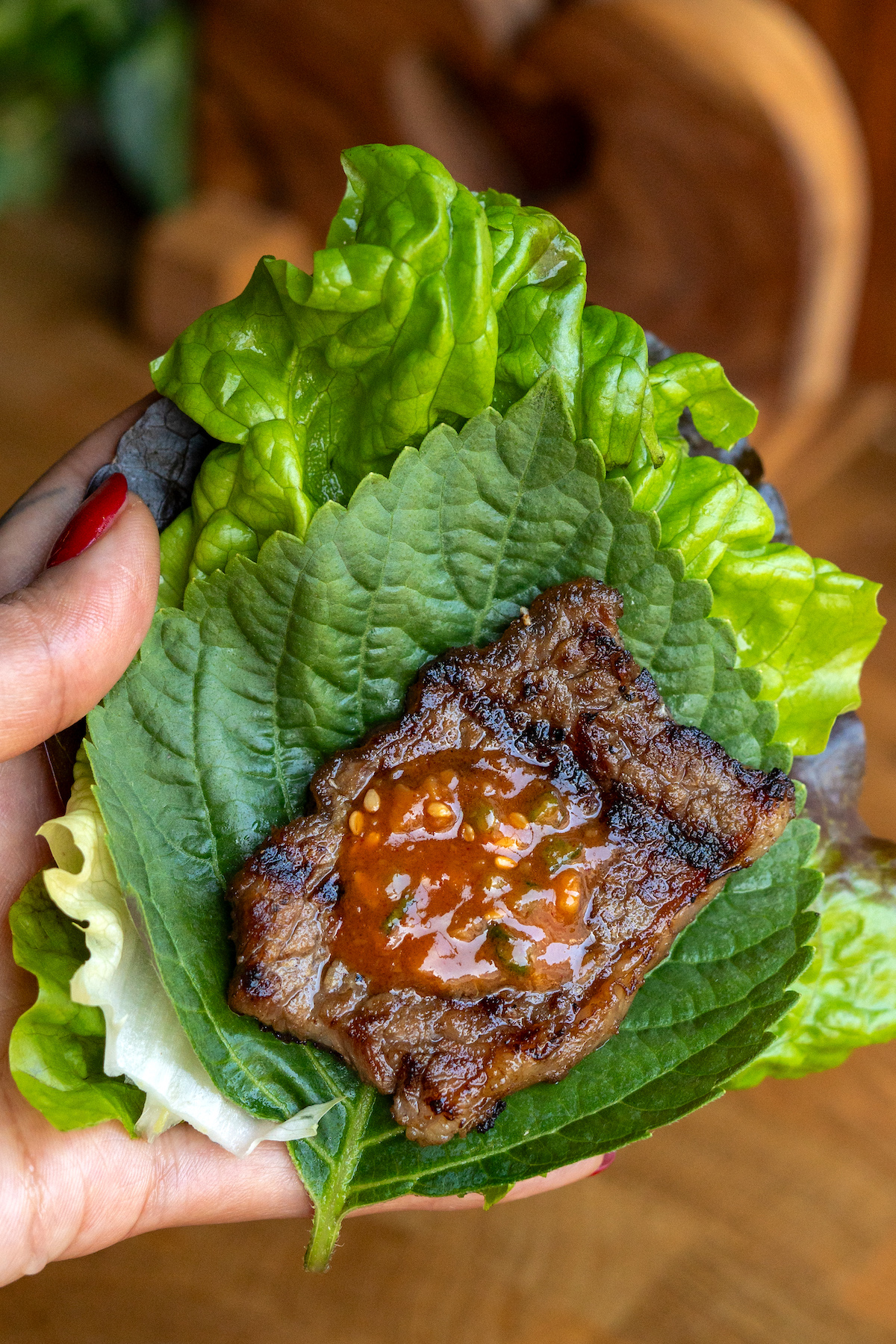
What is ssam?
So, “ssamjang” is a compound word in Korean. “Ssam” (쌈) means wrapped (usually lettuce wrapped), and “jang” (장) means “paste” or “sauce.”
Ssam is a HUGE part of Korean food culture. We just love to lettuce wrap everything and call it healthy 😂
My mom is my biggest example of this. She loves blanching cabbage leaves and using them to wrap around rice, with her own little bowl of ssamjang to add to every wrap. Watching the way my mom ate has influenced A LOT of my eating habits. It’s a big reason why love ssam so much!
Ways to eat ssamjang
Korean BBQ with ssam- when I think of Korean bbq, ssam is always involved. Lettuce wraps, perilla leaves, ssamjang, jalapeno slice, and grilled meat is the BEST flavor bomb! I recommend samgyeopsal (pork belly) the most for this.
Ssambap– rice wrapped in any kind of leafy green with some ssamjang. Blanched cabbage is one of the most common ways to make ssambap.
Bibimbap- for a non-spicy version of bibimbap, you can use ssamjang! Just use a smaller amount as it can be very salty.
- Fresh veggies- ssamjang is a great dipping sauce for veggies. Some of the best options are cucumber, carrots, lettuce, and Korean chili pepper (my favorite!)
- Pasta– you can also use ssamjang to make pasta! Think of a creamy miso pasta, but with ssamjang. I will work on a recipe for this soon 🙂
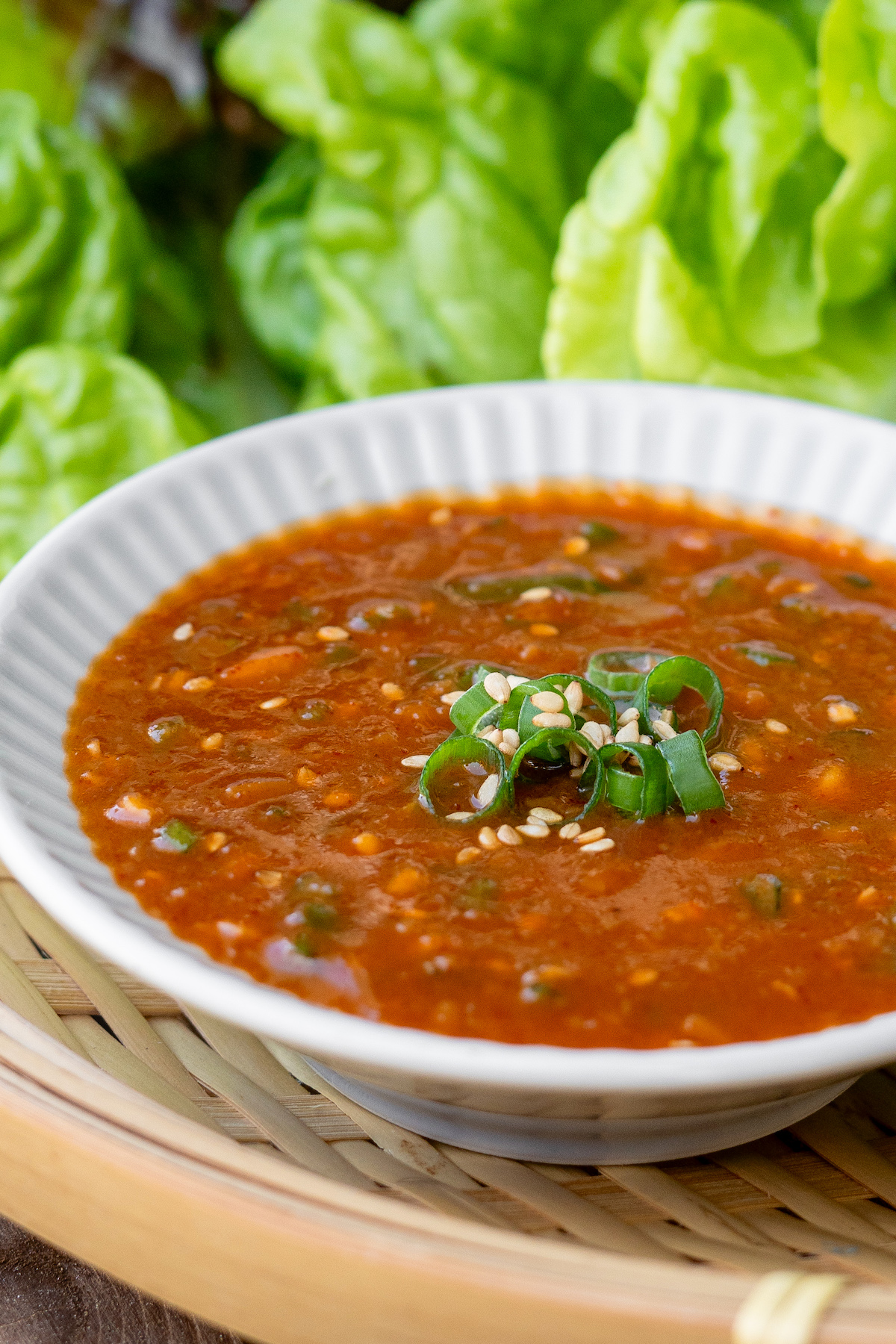
Banchan for KBBQ
Planning a KBBQ night at home? One of the best parts of going to KBBQ restaurants is the banchan! Here are some of my favorite side dishes for Korean bbq:
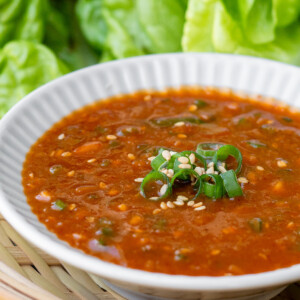
Ssamjang
Ingredients
- 1/4 cup dwenjang
- 1 tbsp gochujang
- 1 garlic clove, minced
- 1 jalapeno, deseeded and minced
- 1 tbsp honey
- 1 tbsp sesame oil
- 1 tsp sesame seeds
Instructions
- Prepare the garlic and jalapeno. Mince 1 garlic clove, then deseed and mince 1 jalapeno pepper.

- Combine with the remaining ingredients and mix well.
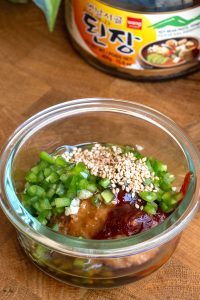
- Use right away or store in the fridge in an airtight container for up to 2 weeks.*Ssamjang can last for up to a couple months if stored & handled properly. Keep in a clean, airtight container in the fridge. To avoid contamination, use a clean spoon to take out the amount you need every time.
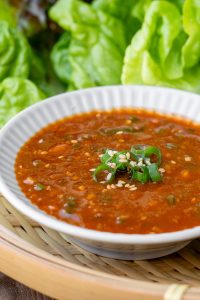
Nutrition information is automatically calculated, so should only be used as an approximation.
